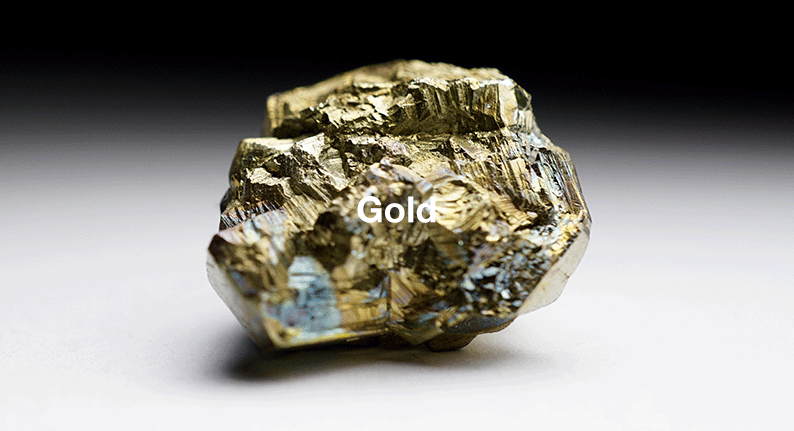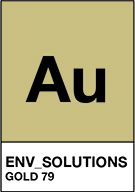Gold Metal Profile
07 Apr, 2020 8:39 AM / by Quek Leng Chuang

Gold is by far the most common precious metal. Most people even consider it the most precious one, however PGMs are more rare than gold. For its unique colour and properties, gold is widely used for manufacturing of jewellery and decorative objects. It’s one of the Platinum Group Metals (PGM) we recover at Environmental Solutions (Asia). Here is an outline of the origin and applications of this precious metal.
1. Facts and figures
- Chemical name Au79
- Gold is extremely malleable: It can be made so thin that it is transparent
- Also, one gram of gold can be made as big as to cover a surface of 1 square metre
- Food producers use gold as a decoration for sweets and in alcoholic drinks. It is not known to harm the body, but is tasteless.
- Gold is the only metal showing a unique golden color – other metals can only show this color after oxidation or reaction
- Gold originated during the supernova collapse of the former sun in our universe – some theories also claim that the gold that can be mined by human beings has been brought to us by an asteroid
- Pure gold is 24 carats
- Acid cannot dissolve gold contrary to other metals
- Every human body contains about 0.2 miligrams of gold, most of it in the blood
2. Natural occurrence and mining

Most of the gold is found in pure form in the earth crust as nuggets or grains. That is why it was discovered early in comparison to other precious metals like the PGMs and has a status as grandfathered mineral. Commonly, it is also found in alloys with silver, copper or palladium or with quartz or sulfide minerals e.g. the so-called Fool’s gold. The only way to solve gold is through the use of aqua regia, a liquid made of nitric acid and hydrochloric acid.
In 2018, 3260 tons of gold have been mined. Most of the mining in 2018 occurred in China (400 tons), Australia (310 tons) and Russia (295 tons). Estimates show that there should still be around 54 000 tons of gold in discovered and undiscovered gold mines around the world.
Gold extraction occurs in underground mines or open pit mines. Once upon a time, people mined gold by just using simple tools and directly collecting small gold nuggets out of a river. As gold has a higher density than most of the other minerals, it stays on the bottom of the gold pan and can be easily connected. This approach to collect gold is very environmentally friendly, but not widely used anymore as it is economically not viable and involves very hard physical work.
Most of the mining therefore is done in open pit or underground mines. Often, the gold there is not even visible with human eyes as the concentration is too low. Several processes can be used in order to refine gold. However, in rural areas e.g. in the Amazonian rainforest, miners still use cyanide in order to separate gold from other minerals. It is more efficient than the formerly used amalgam method, where gold ores are mixed with quicksilver. However, both methods put high pressures on the local environment and the people due to the release of chemicals. Quicksilver steam pollutes the air, whereas cyanide and its hydrocyanic acid are extremely poisonous for cells already at low concentrations. An infamous environmental catastrophe showing this was the Baia-Mare dam break in 2000 in Romania, where more than 100,000 cubic metres of sodium cyanide lye flooded the area, polluted the rivers and killed more than 1,400 tons of fish living there.
Today, most of the producers use a mixture of methods to win gold, often including electrolysis as this leads to cleaner results than former methods. Still, the chemicals used as well as transportation and the devastation of ecosystems make the environmental, ecological and social footprint of gold higher than expected.
As gold receives more attention from the public than any other material, organisations already try to certify fair gold, for example Fairtrade. This standard is mainly used for gold mined in small-scale mining operations in order to ensure miners get a fair price, are able to live a decent life and to send their children to school. Fairgold sets a first steps towards more sustainable mining operations, especially improving social aspects. However, also this standard cannot forbid the application of chemicals as they are needed to purify gold.
Gold recycling has been very popular as it can save the immense resources associated with gold. Today already one third of worldwide gold demand is covered by gold recycling. Commonly, jewellers take in “old” gold jewellery in order to process it into new goods. Also other goods where gold is used e.g. mobile phones contain remarkable quantities of the precious metal. From only 40 mobile phones we are able to recover as much gold as from a whole ton of ore. Still, only 10-15% of all mobile phones are recycled in order to use gold!
For gold recycling, either mechanic, pyrolytic or wet chemical and electrolytic methods come into play, sometimes they are even combined in order to recycle gold fully and feed it back into the cycle. When conducting pyrolysis, gold is incinerated and molten at high temperatures in order to separate it from other materials. The wet chemical method relies on aqua regia in order to dissolve gold. Afterwards, sulphur dioxide is applied for reduction and finally, electrolysis serves as a method to purify gold further. Even though refining is necessary in order to recycle and repurpose gold, gold recycling has a much lower environmental and social impact than natural mining of it. There are no quality differences between mined and recycled gold, therefore it is definitively an advantage to recycle gold as it is also more efficient in economic terms.
Some companies e.g. investment companies already offer gold bars that only consist of recycled gold. This enables consumers to make a conscious choice for sustainably sourced gold. As consciousness amongst consumers and businesses grows in this realm, the use of recycled gold and other recycled precious metals will become even more important in the following years.
3. Applications
The most common application of gold is of course its use for jewelry (80%). As gold is comparatively malleable, it is easy to process. Due to this, frequently decorative like photo frames, furniture or architecture elements are only covered with gold as a relatively small quantity is already sufficient in order to make something look like it consists of gold. Therefore, gold is also used for tableware and glass. Moreover, gold has its own E-number (E 175) as it is used for decorating dishes and to make drinks appear more precious.
Many speculators and private people use gold in order to store their wealth. As with PGMs, there is the possibility to physically purchase gold or just to purchase and trade gold value papers. Historically, gold was also the first mineral used in order to secure the value of valuta.
Newer applications of gold include the field of electronics: As gold is easy to process and highly resistant to corrosion, it is used in wires, conductor plates and in order to cover contact surfaces or plug connectors.This makes it essential for many electronic devices including smartphones, laptops and storage disks. Usually, only small amounts of it are needed amongst a blend of other metals.
Like silver, gold can also be used in the form of nanoparticles. Strangely, these particles show a deeply red colour. They can be used for catalysis and electronic conductors, but also as therapeutic agents and for drug delivery. The application of gold as a nano particle opens up a fully new field of possible applications for the future.

4. An Alternative to Mining
Environmental Solutions (Asia) helps companies to turn the cost of managing their waste materials to potential revenue. For more information, please contact us.
Topics: Metal Waste, Reimagining Sustainability
Written by Quek Leng Chuang
LengChuang is a chemical engineer and an expert in carbonomics. He is the founder and owner of Environmental Solutions (Asia) Pte Ltd.
